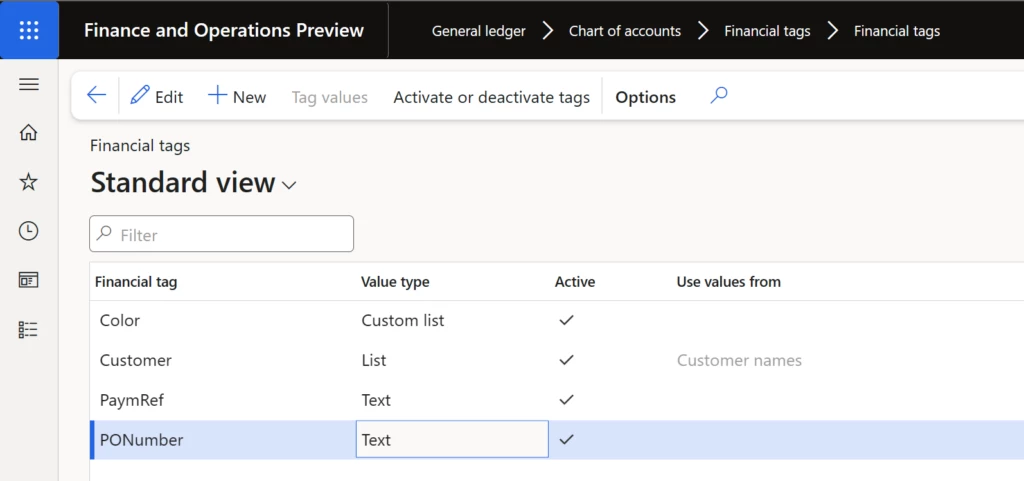
Financial Tags: Flexible reporting and analytics capabilities without the overhead of dimensions
Organizations need subledger data, external data, and even internal ‘notations’ for managerial reporting and analysis on their accounting entries. But it’s a struggle! It’s challenging to get to detailed data in the subledger data model and there isn’t a solution for external data or internal notations. Organizations are adding more financial dimensions, concatenating data into the transaction descriptions, or using the document number to track this additional data within general ledger and none of these are presenting the results users desire.
These challenges are what prompted the Dynamics 365 Finance team to add the Financial tag feature. Financial tags allow an organization to track up to 20 user-defined fields on the accounting entries within general ledger.
Financial dimensions are not going away…..instead financial dimensions and financial tags supplement each other. The ‘right feature for the right job’! It’s been fun listening to customers discuss how they can eliminate some financial dimensions, and instead use financial tags. If you’re in the implementation phase, now’s the time to consider financial tags instead of financial dimensions. One customer eliminated 17 financial dimensions and instead is using financial tags to track that data when they go live. Documentation comparing financial tags and financial dimensions can be found here to help with that evaluation.

In addition to the document comparing financial dimensions and financial tags, also consider using financial tags when:
- The financial dimension is not part of a dimension set. Dimension sets are used to calculate balances at the dimension level for things such as generating the trial balance within Dynamics 365 Finance. If you don’t use the financial dimension on the trial balance list page, consider financial tags! Financial tags are a powerful tool for managerial reporting and analytics, without having to use financial dimensions. Here are the benefits:
- Just like financial dimensions, financial tags are stored on each line of the accounting entry.
- Did you know that financial tags are displayed in separate columns on the Voucher transactions and Transaction for <main account> inquiries? We’ve made it easier for you to sort and filter.
- Take it one step further and export the data and summarize the detailed transactions using Excel or Power BI.
- If you don’t need to post opening balances for retained earnings for every financial dimension, then consider moving those financial dimensions to a financial tag instead!
- For example, we see organizations set up financial dimensions to track PO numbers or a Product. Is it necessary to post an opening balance to retained earnings for each PO or product? Financial dimensions can be excluded from retained earnings calculations by using Close single for the P&L accounts on the year-end close setup, but you still have overhead with tracking the data as a financial dimension. This is just another consideration for determining whether a financial dimension can be replaced with a tag.
You might be wondering what’s coming next for the financial tags feature. The first release of financial tags was just the beginning with delivery of the following:
- Setup of the financial tags
- Entry of financial tags on transactions within the general journal (including the entities) and global general journal
- Viewing financial tag values (in separate columns) on some general ledger inquiries after posting the general journal
- Editing the financial tag values after posting
We are continuing to expand financial tags into journals, documents, processes….anywhere you can enter financial dimensions on transactions, financial tags will eventually be there.
For the next phase, we’re investigating adding user-defined defaulting rules for financial tags. For example, if you create a financial tag as ‘Customer name’, you can define a rule to have the customer’s name default into the financial tag if a customer exists on the transaction.
Are you ready to setup some Financial tags? The feature documentation can be found here. Keep watching the Release notes and What’s new documents for updates!



